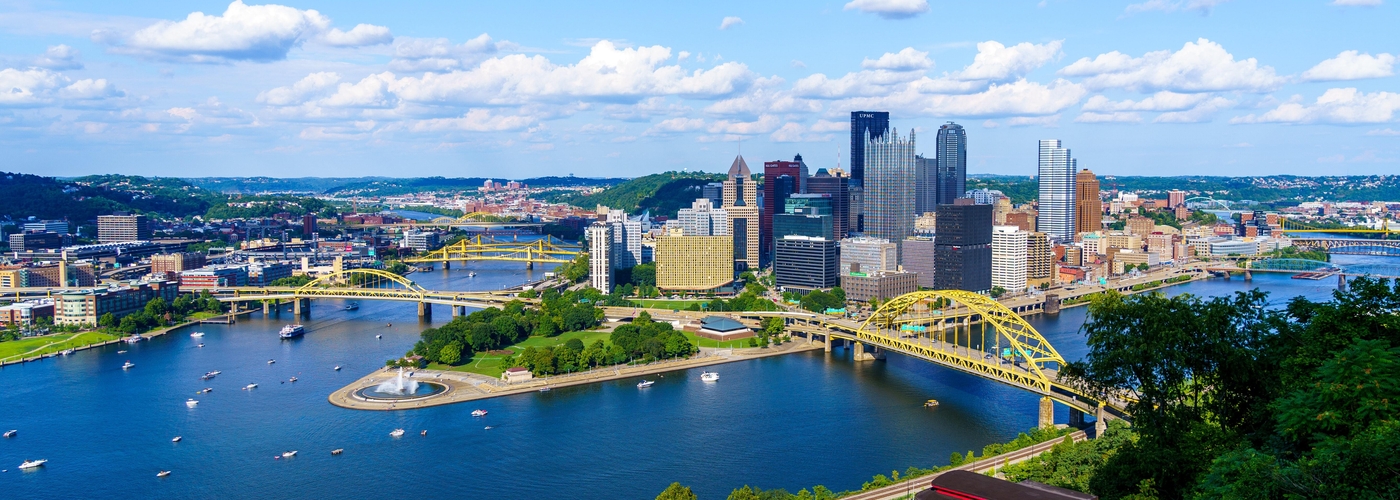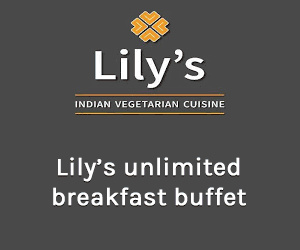Neil Sowerby tucks into craft beer and vast snacks in Pennsylvania’s ‘other city’
Along the Ohio, the Allegheny, the Monongahela, as far as the eye can see, bridges. Elegant suspensions, sturdier cantilevers, a clutch leaping out since they are painted a dazzling yellow. Pittsburgh is known as the ‘City of Bridges', owning up to 446 in total, though many are more modest than those that span the two subsidiary rivers as they combine at The Point State Park to form the mighty Ohio.
Pittsburgh doesn’t buck the American requirement for healthy sized (or unhealthy depending on your perspective) portions
This rare cityscape is laid out before us from the observation deck at Mount Washington, 370ft above the riverbank. Today it’s a desirable South Side suburb with upmarket restaurants lining Grandfather’s Row. It is traditionally reached via the Duquesne Incline funicular ($2.50 one way, $5 return), still using the original red cable cars from its 1877 inception.
Only the year before Mount Washington had changed its name from Coal Hill, which was testimony to the area’s rich seams fuelling the furnaces that gave rise to Pittsburgh’s other nickname, ‘Steel City’. Check out images of its hellish heyday at the city’s Heinz History Center (a benchmark scene setter, even the museum’s ‘birthplace of the beans’ homage is well done and it also vividly traces the frontier pioneer trails).

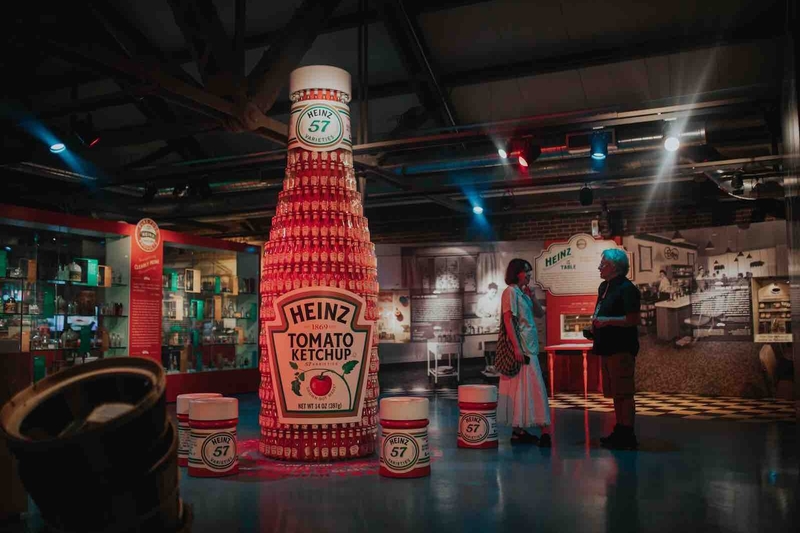
All that heavy industry crashed and burned last century but Pittsburgh didn’t go down the Detroit route. It has obviously benefited from the rich cultural legacy of magnates such as Heinz, Carnegie and Mellon. Witness the roster of galleries and museums to match any in the States for a city this size. The August Wilson African Cultural Center celebrating the legacy of the city’s trailblazing playwright; The Phipps Conservatory and Botanical Gardens; The Carnegie Museums; the interactive ‘creative laboratory that is the Mattress Factory. Then each June there’s 10 days of Three Rivers Arts Festival, free music and art for all.
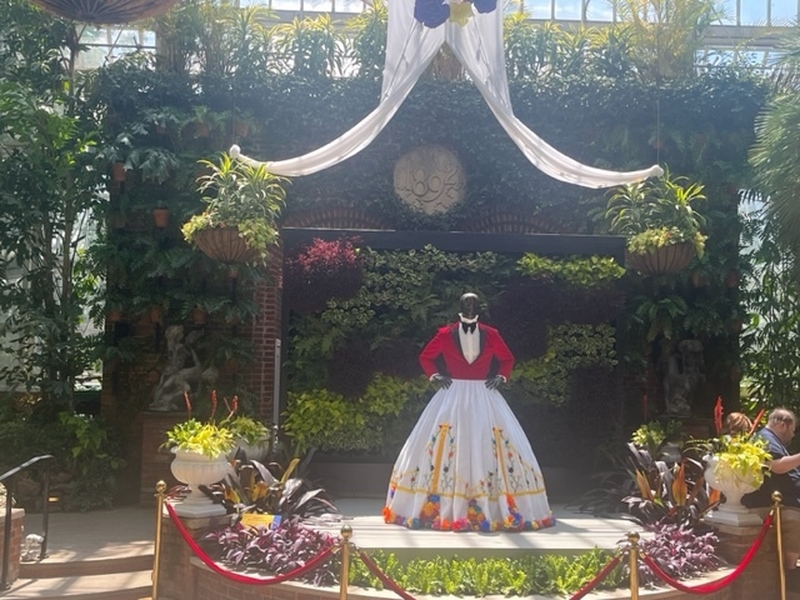
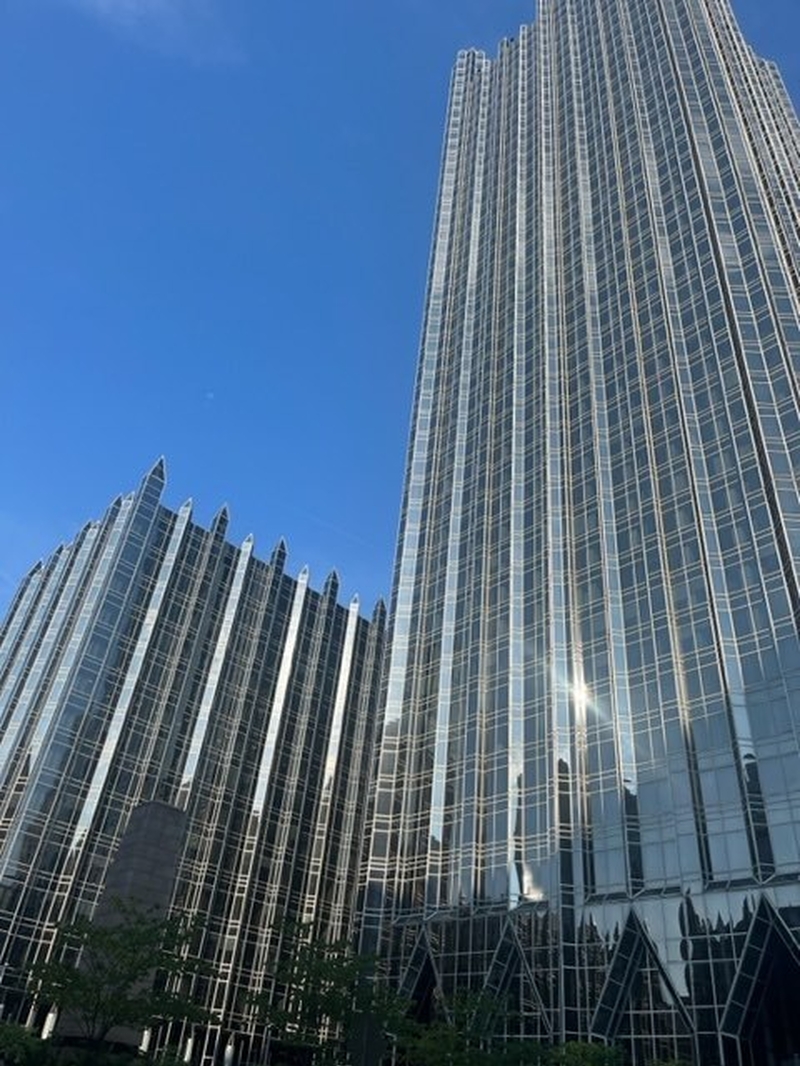
Alongside, making it an even more attractive destination, Pittsburgh has coolly reinvented itself as among the most approachable, liveable of places. Cooler than Pennsylvania rival Philadelphia and all that brotherly love. Creative incomers have rejuvenated the many distinctive neighbourhoods spread out across the hills without diluting the traditional communities of Poles, Italians, Germans and the like lured here originally by the wages of steel.
Pittsburgh is decidedly walkable, too. Especially in the ‘Golden Triangle’, the downtown where we were staying, that combines 19th century edifices and early skyscrapers with striking modern architecture, notably Philip Johnson’s neo-gothic glass citadel PPG Place. Instead of gawping up, though, I devoted a spare hour to rambling along the downbeat Allegheny river path.

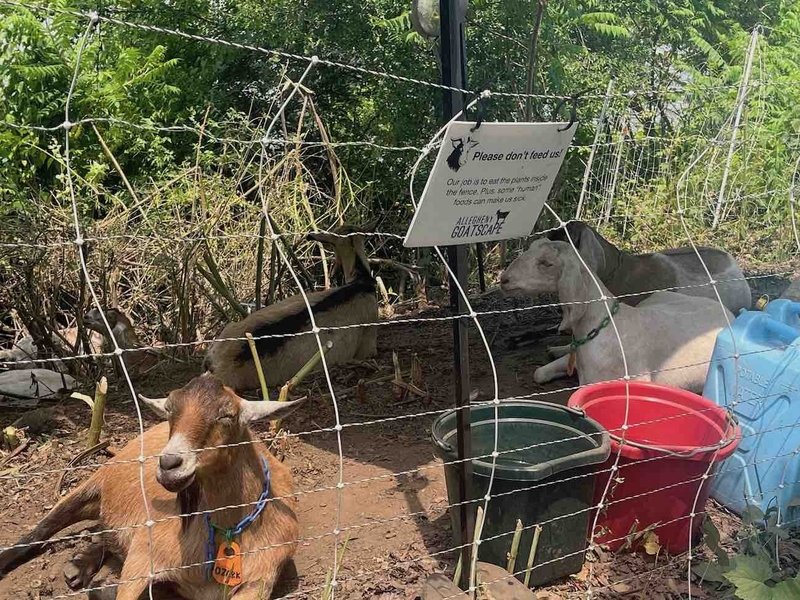
I started at the (un-sleazy despite the name) Strip District and The Terminal, an old wholesale market repurposed as a food and drink destination, and rambled to the aforementioned Point. Where it all began when the French established Fort Duquesne in 1754; later the site became Fort Pitt under the British. Today it's 36 acres of leafy picnic spot with an impressive fountain. En route I had the path almost to myself bar some penned goats. Their quirky mission? To chomp up invasive species such as knotweed. The reborn city is proud of its sustainability record.

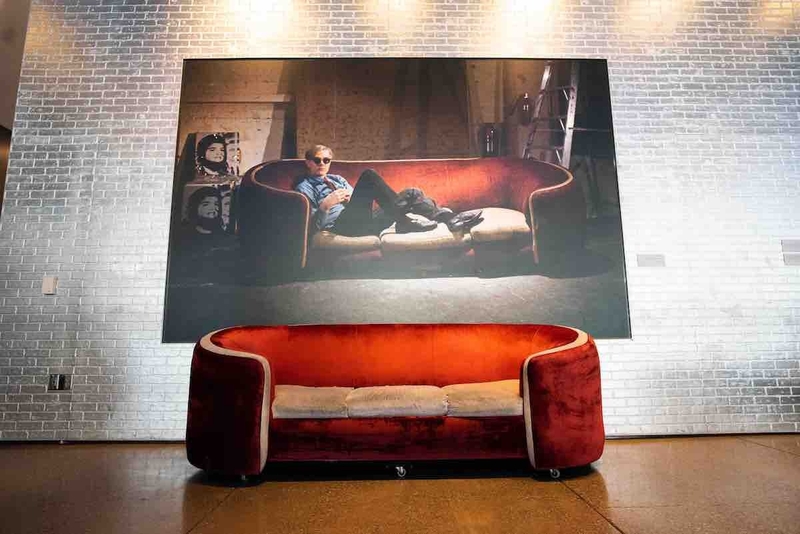
Across the river on the North Side is the spectacular Pittsburgh Pirates baseball stadium on the stretch that is also home to the Three Sisters Bridges. These are the only trio of identical bridges in the world (and yes they are yellow). Each is a tribute to a local hero. Only one Sister has been renamed after a female – pioneering environmentalist Rachel ‘Silent Spring’ Carson. The second honours Pittsburgh baseball legend Roberto Clemente, who perished in a plane crash half a century ago, and the third Andrew Warhola, born in Pittsburgh in1928 to emigrant parents from what is now Slovakia.
The Andy Warhol Bridge takes you across to The Andy Warhol Museum celebrating one of the 20th century’s key artistic figures. Having left for New York, he changed his name from Warhola after a magazine mistakenly credited his artwork to a Mr Warhol. The must-see destination in Pittsburgh? Definitely. Worth a full day of your precious time.
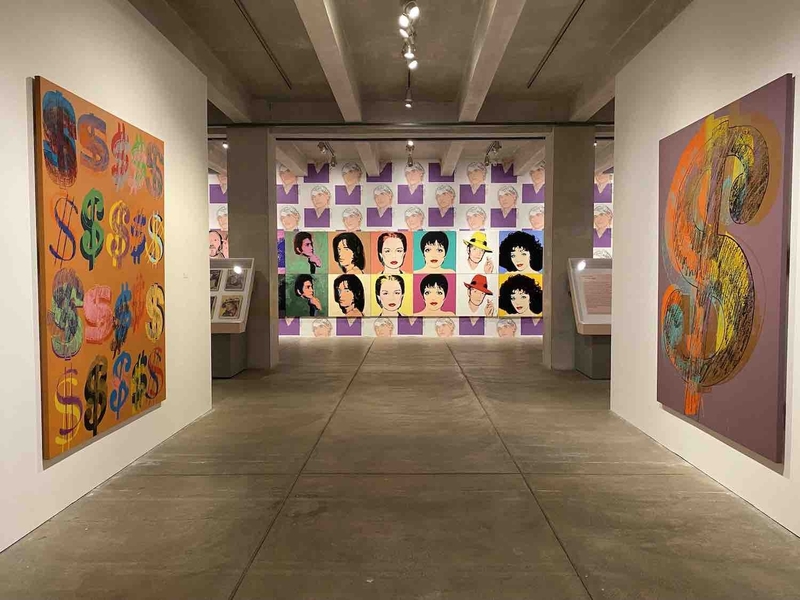
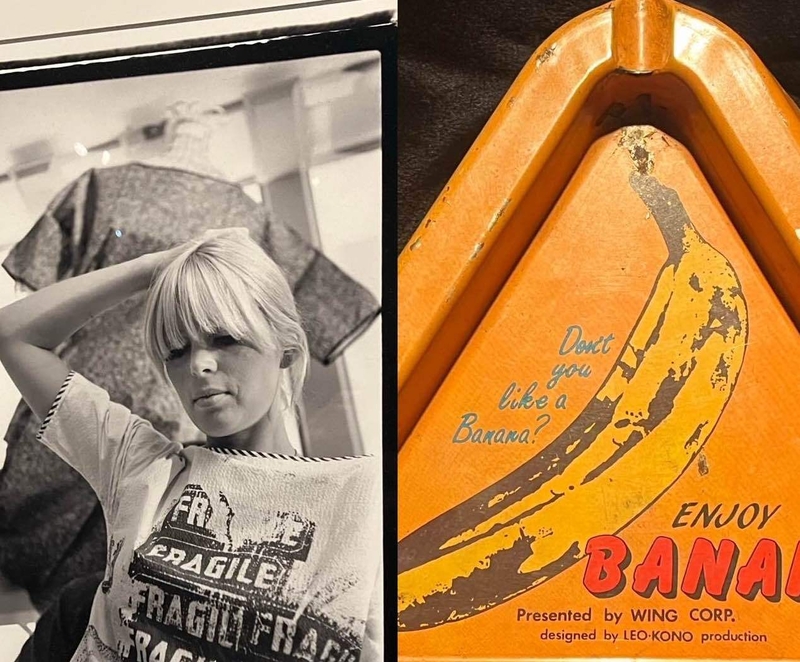
The World of Warhol
Campbell soup cans, silkscreens of Marilyn Monroe and Elvis, the Velvet Underground as house band, films that define Sixties and Seventies decadence, tragic Edie Sedgwick and The Factory studio ensemble… you think you know the queer, challenging oeuvre of Andy. Then you roll up to the largest gallery in North America dedicated to a single artist – and you are confronted with a genius that transcends the socialite stereotypes.
OK, for nostalgia reasons, I was blown away by the current exhibition, The Velvet Underground & Nico: Scepter Studio Sessions, which runs until September 25 2023. It offers the public the chance to experience master tapes discovered in the museum’s archives alongside rare band photographs and unseen live performance footage.
You can explore 100 different versions of The Velvet Underground & Nico cover art, all with varying degrees of the banana peeled, from the collection of Velvet Underground enthusiast Mark Satlof. Even the ashtray with a banana insignia believed to be Warhol’s inspiration for the album art. Yet my special love goes out to the Eighties portraits, many of which were lucrative commercial commissions, yet offer acute psychological snapshots of the sitters.
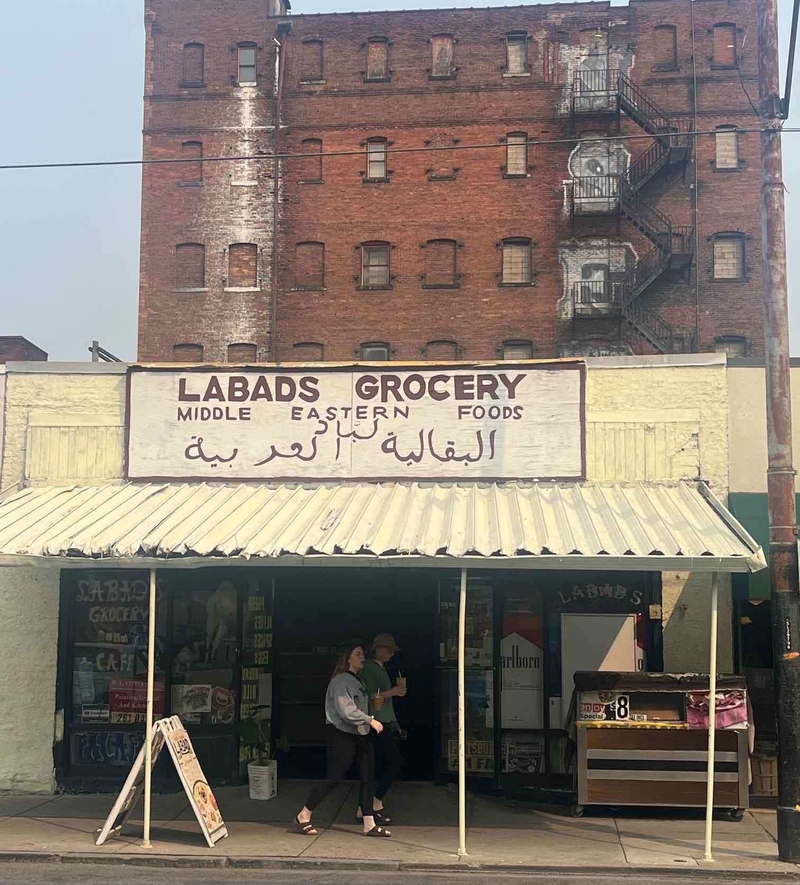
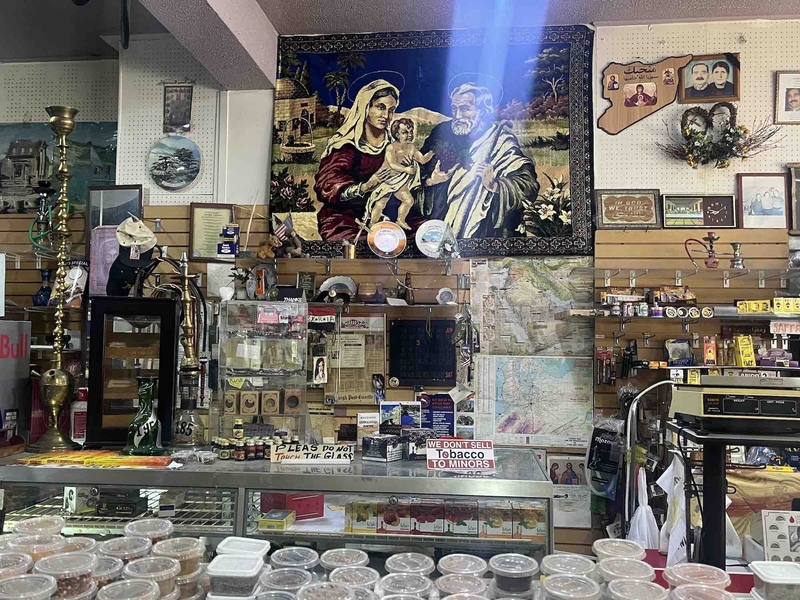
Melting Pot in the Crucible of Steel
The name Warhola is still current in Pittsburgh. En route back from the Duquesne I caught sight of it plastered on a warehouse wall. Family members have long been rivals in the scrap metal trade. Not that I’m claiming any link with those Campbell soup cans. The city is full of echoes of various ‘old countries’, notably via their signature food. In Series 10 Episode 4 of Parts Unknown Anthony Bourdain tackled a raft of Italian specialities, Hungarian kolbasz sausage, sauerkraut, and pierogies, those Polish filled dumplings that have been adopted big time here. A little souvenir I brought home was a tub of pierogi salt mix.
The jolliest way to follow in Bourdain’s foodie footsteps is to book a guided tour such as Burgh Bits and Bites. Established 15 years ago by native Sylvia McCoy, Burgh now has options across several districts including the old German settlement of Saxonburg and arguably the city’s hippest quarter, Lawrenceville. Our choice was the more compact Strip District, a former factory/warehouse centre with its diverse cluster of old-style grocers and eateries.
A two hour tour costs $49 a head and numbers are limited to 12. We met our guide in the hidden gem graveyard of St Patrick’s Catholic Church, whose tower apparently hides a piece of the Blarney Stone. Yes, the city had its share of Irish emigrants, too. But our sampling ramble around this heritage quarter didn’t take in boxty or colcannon.
Treats included traditional Syrian hummus, Greek snacks and Latin American empanadas, while a strong Italian-American presence contributed top notch cured meats from Parma Sausage, delightfully messy pepperoni rolls in marinara sauce from Sunseri, cinnamon bread from Mancini’s and artisan biscotti from Enrico Biscotti. Alas, no pierogi. Even in the shadow of the imposing St Stanislaus Kostka, effectively the Polish cathedral.


What the Yinzers eat – getting down and sloppy
Along Penn Avenue, the Strip District’s main drag, you run into an assertion of communal identity. OK, Yinzers In The Burgh is actually a novelty gift/sportswear emporium, but it celebrates the blue collar accent of the old Steel City, where yinz or yunz was the equivalent of you. Think y’all from further south. Heavy the accent might have been but not up there with the weight of a Primanti Bros sandwich – grilled meat, melted cheese, an oil and vinegar-based coleslaw, tomato slices, and French fries between two thick slices of Italian bread. 2023 marks the 90th anniversary of Joe Primanti swapping his street cart for permanent Strip District premises. Nowadays it is a brand with 40 locations across the city and the Eastern Seaboard but long queues still form at the 18th Street original, which we visited. Witness the immensity of my order – which went big on pastrami.
Pittsburgh, indeed, doesn’t buck the American requirement for healthy sized (or unhealthy depending on your perspective) portions. Take family-owned neighbourhood American-Italian DiAnoia's Eatery. It’s a buzzing, smart place, but surely a server could have dissuaded me from ordering the Gnocchi Sorrentino Bread Bowl just for myself – gorgeous in-house potato gnocchi en masse with mozzarella, pecorino romano and basil marinara served in a house made bread bowl the size of a frisbee.
Breakfasts can serve up equivalent amounts of calories and carbs, if you are not careful, but hey it’s America. Here are two contrasting venues that are cool places to start the day. Quirky diner Sally Ann’s is downtown, while over in East Liberty at Square Cafe the emphasis is on seasonal and fresh. More eclectic, for lunch, try Kaya in the Strip District, where the spicy cuisines of the Caribbean, South America and the Pacific fuse playfully.
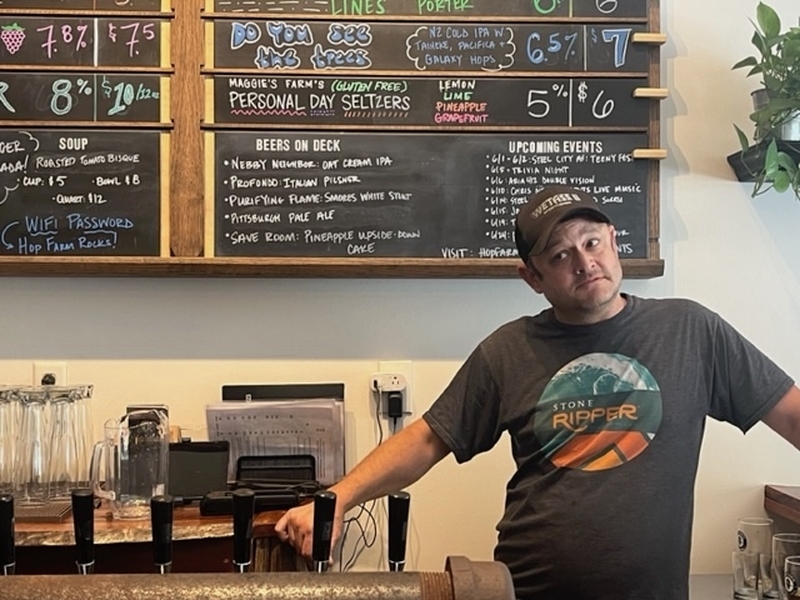
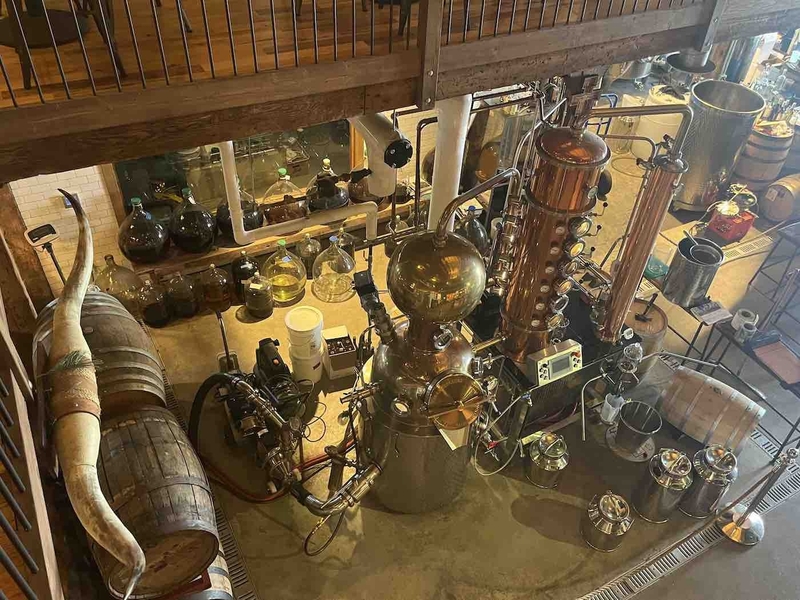
Craft beer, mead and distilled delights
One souvenir of my trip is a tee-shirt from the US’s oldest still operating brewery, Pennsylvania’s family-owned Yuengling. Brewing of its distinctive amber lager dates back to 1829. That makes it 30 years older than Pittsburgh’s own Iron City Beer, commemorated by a sign high on a bluff above Point State Park. After takeover and closure in 2007 it is now being brewed again downriver. Nowadays it has to compete with a raft of tremendous craft breweries. Recommended: Dancing Gnome (great name, its Lustra American pale is my top pick from the trip), Necromancer, Trace, Four Points, Voodoo, Hitchhiker, Grist House and Cinderlands. I visited taprooms belonging to the last two and they really show British equivalents how it should be done.
It is great to talk hops and styles on site, so I‘d particularly recommend trekking up to laid-back Lawrenceville (once also home to Iron City) to investigate Hop Farm Brewing, champions of sustainability and urban farmhouse beers. Founder Matt Paul is even a cask ale fan; a hand pump sits on the bar of their bijou taproom.
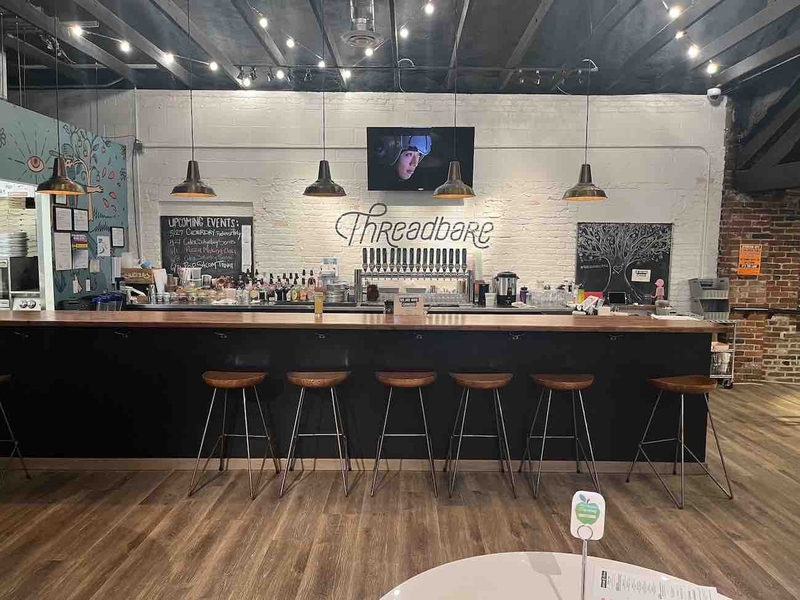
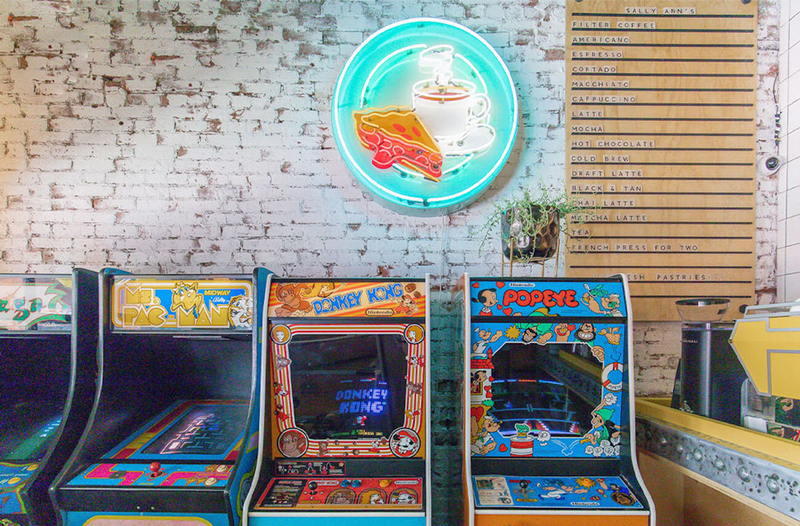
Away from beer Pittsburgh also has its own contribution to the fermented honey wine revolution that has seen the number of meaderies top 500 in the States. From local apples and honey Threadbare Cider House on the North Side makes ‘hard cider’ and mead. A flight of the latter was great to accompany their other speciality – pizza. They even do one topped with apples and cider-braised pork. All this is in honour of 18th century Pennsylvania legend Johnny Appleseed, whose missionary zeal for collecting pips helped propagate orchards across the frontier states.
There’s a contemporary zeal for globally-inspired distilling and speciality liqueurs at Kingfly Spirits, who occupy a restored carriage house in the Strip District. A glorious spot to sample a cocktail or two.
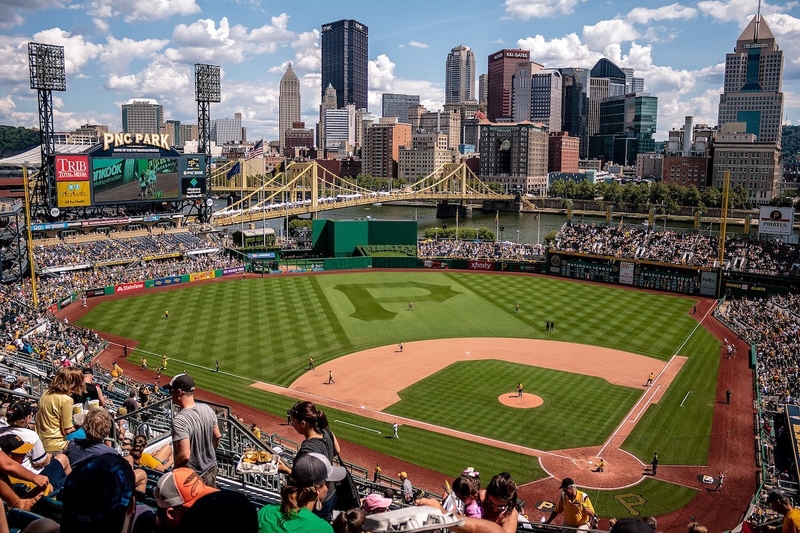
Baseball – my voyage into the unknown with the Pirates
Pittsburgh is traditionally a great sports city; both the baseball and football stadia are central landmarks. And, yes, it was on my bucket list to experience a baseball match. Still I’m totally baffled by what’s happening on the field at PNC Park. It’s the equivalent of explaining a googly or a silly mid-off to a non-cricket fan. Only a half hour of ‘rain stops play’ has been familiar. Sure I’m enjoying the family friendliness, the stoked-up razzmatazz from the tannoys and big screens and the backdrop of the city’s distant towers is a wow. Yet the match seems the slowest of burners. Oh, for a Ben Stokes!
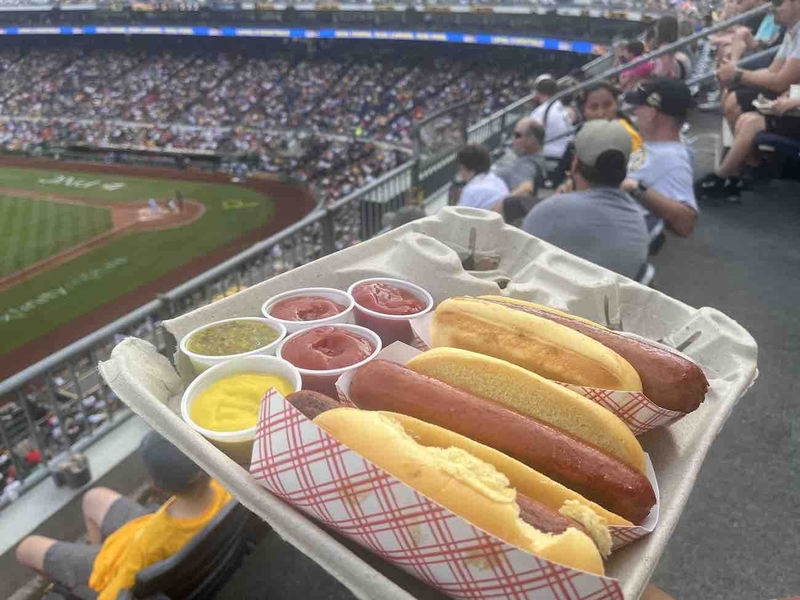
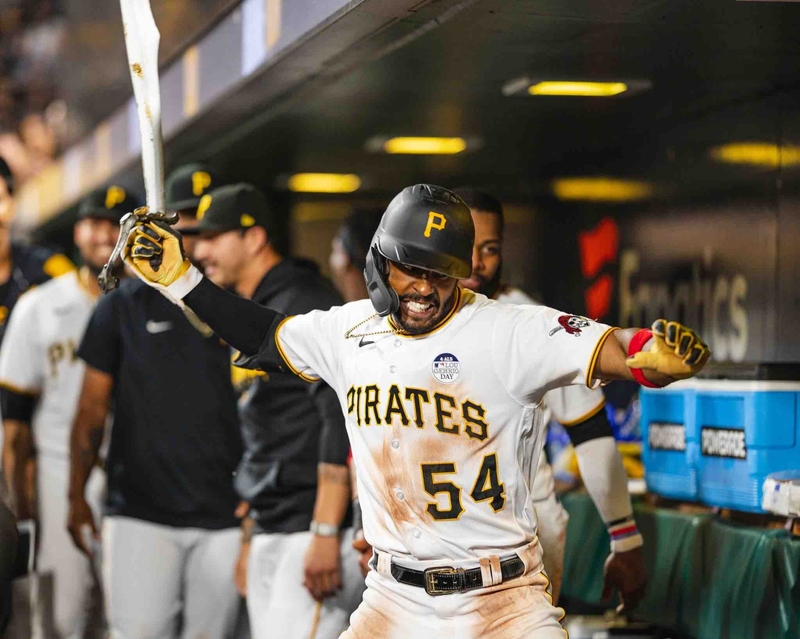
Consolation: another huge can of Yuengling and a tray of dogs arrives… along with a home run that brings the Pittsburgh Pirates back into the game after the Boston Cardinals seemed to have it sewn up. Eventually the crowd goes gently mental as the home team seal a great comeback to triumph 7-5. The Pirates haven’t won a World Series since 1979, but this win and two more over the Cardinals in the following days suggest a resurgence. The city’s NFL team, the Steelers, are apparently in much better shape.

Out of town – go wild or take a more structured approach with Frank Lloyd Wright
In the small museum at the summit of the Duquesne Incline is an old print of the city’s Kaufmann department store. The entrepreneurial family are now best remembered for their patronage of the ground-breaking American architect Frank Lloyd Wright, who in the late 1930s designed their country retreat Fallingwater in the Laurel Highlands 70 miles south of Pittsburgh.
These rolling hills and valleys are the perfect outdoor escape from the city. Maybe go hiking in the Ohiopyle State Park or rafting on the Youghihogheny River (we just picnicked on its banks after a detour to take in the photogenic Cucumber Falls). The really ambitious could tackle the 150 mile Great Allegheny Passage to Maryland ( with a further 135 miles of trail before you reach Washington DC).
The magnet for me, though is definitely Fallingwater, one of the eight Wright houses designated on the UNESCO World Heritage List and undoubtedly his crowning achievement in the field of domestic architecture. He designed it to rise above the ravine waterfall over which it is built… in an organic union of art and nature. Wright (1867-1959) was a control freak about every aspect of his interiors, so each patron had to battle to establish their own identity – and in some cases home comforts.
Fallingwater is rare in retaining all the original furnishings from when it and the surrounding 469 acres were bequeathed to the West Pennine Conservancy in 1964. The contents feature the Kaufmanns’ art collection, including two Picassos. It is, though, the open plan main living space that stuns you on arrival, the culmination of Wright’s subversion of 19th century ideas of a cluttered home. A guided architectural tour costs $35 per person, an in-depth guided tour $87.
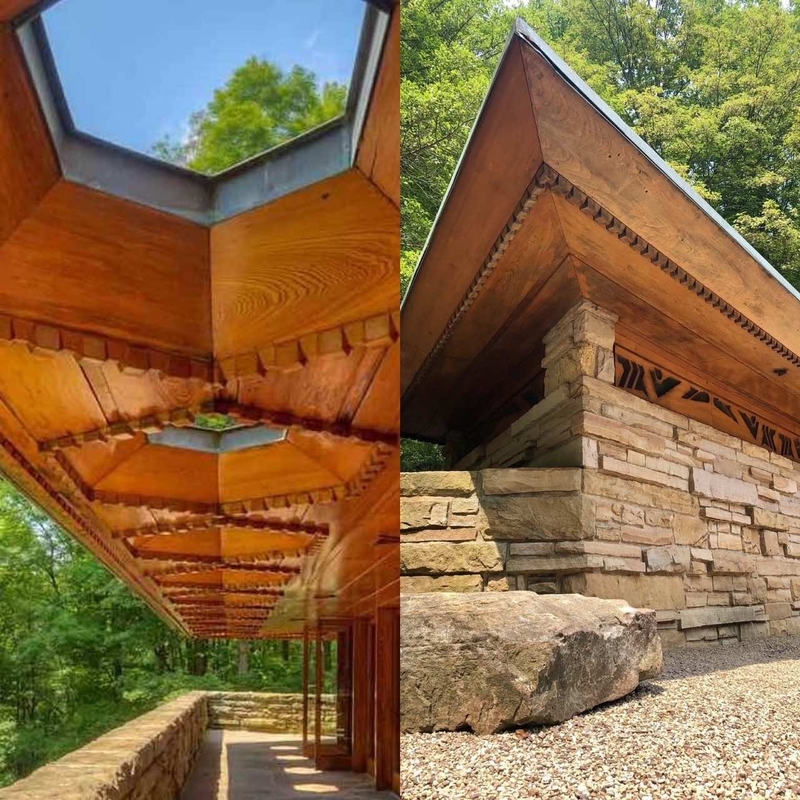

The immediate area has become a kind of Frank Lloyd Wright reserve. Six miles south and also open to the public is Kentuck Knob, built in the 1950s for another Pittsburgh patrician family, impressed by Fallingwater. Constructed of native sandstone and red cypress and featuring lots of glass and cantilevered overhangs, it blends into the hillside. Wright called this folksy style ‘Usonian’.
Further interaction with nature comes at nearby Polymath Park, a 125 acre resort, featuring two houses built by a Wright apprentice and two by the man himself, which have been transported here, lock, stock and quirky fittings, from lllinois and Minnesota respectively. You can actually book to stay overnight. An added bonus to a day visit is a $175 a head Tree House Dinner Tour, combining the architecture with a five course meal in state of the art huts among the foliage. The Steel City seems a long way away.
Fact file
Neil stayed at The Industrialist Hotel, Pittsburgh, Autograph Collection. Built in 1902, the historic 18-story Arrott building was one of the tallest and most innovative skyscrapers built in downtown Pittsburgh. This legacy lives on in the hotel’s 124 rooms and suites, which pay homage to the city's steel industry and to the surrounding natural beauty. Accommodations feature lofty layouts and thoughtful design details like backlit custom leather headboards, custom abstract carpets resembling molten steel, ambient lighting and black marble vanities. Also check out its buzzing ground floor restaurant/bar The Rebel Room.
For more information on Pittsburgh, please visit this link.
How to get there
Following the successful relaunch of the London Heathrow to Pittsburgh International Airport direct flight last year, British Airways has increased its current four times weekly service to six services per week. From May until October 28, the city will be even more accessible than ever before. With 90 neighbourhoods, the destination is full of hidden gems. The flight departs London at 16:45 and lands in Pittsburgh at 19:50 local time, taking eight hours 15 minutes. Return fares start from £508 return.
To ensure he made his BA flight from Heathrow Terminal Five Neil stayed at the Euston London Central Travelodge. Room rates in London typically start from £55-£60 and SuperRooms are about £10-£15 more expensive (well worth the upgrade – check details. In high season it can all work out considerably more, but the location is incredibly handy, right next to the mainline station from the North West.


